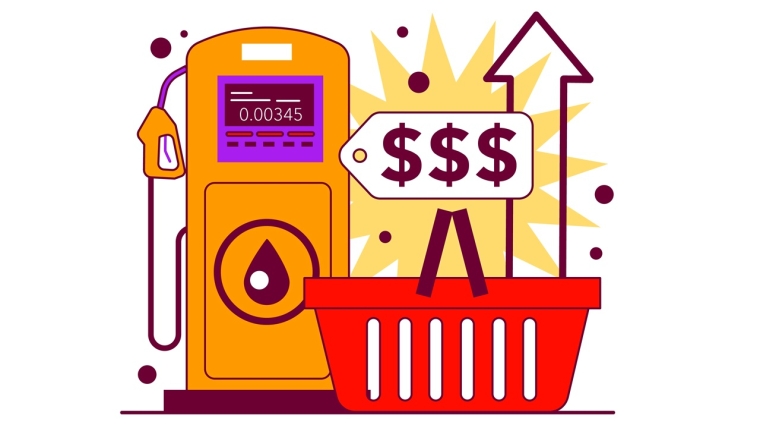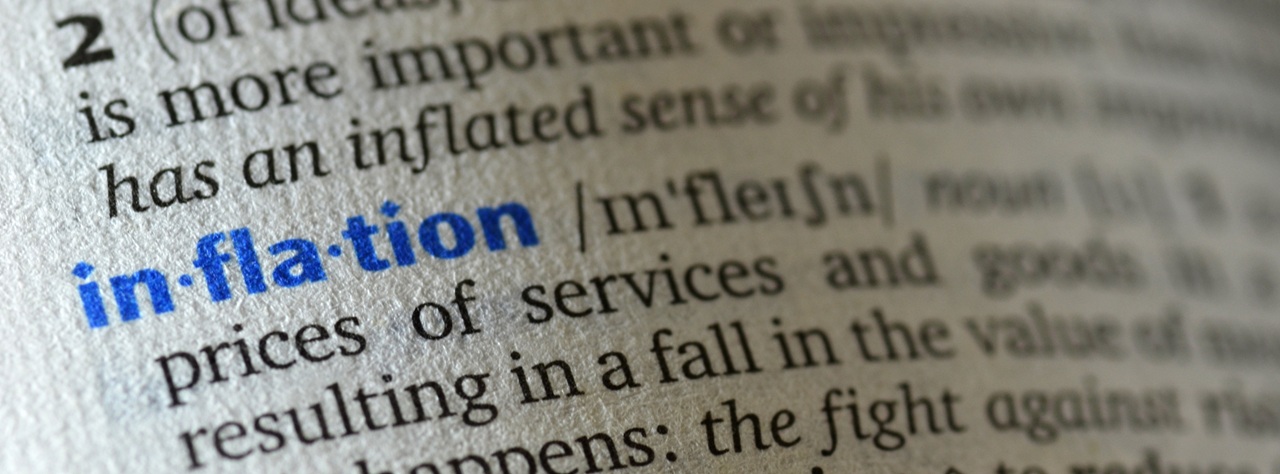
So, who left the back door open?
Just when we thought inflation had been sent packing, with its rapidly deflating tail between its legs, back it comes for another annoying visit.
Remember, this is the same inflation that shot up to a peak of 7.3% in the June quarter of 2022 - so, three years ago now. And this necessitated the Reserve Bank (RBNZ) cranking the Official Cash Rate all the way from the pandemic emergency setting of 0.25%, as of early October 2021, to 5.5% in May 2023.
Mortgage rates reacted accordingly. In mid 2021 the average one-year fixed 'special' rate, for example, was at 2.2%. By the end of 2023 this rate peaked at 7.3%. In the mid part of 2024 we duly then had a short, sharp, recession, with GDP shrinking by 1.0% in each of the June and September 2024 quarters.
Ah, but all this got to inflation, and it withered (eventually), re-entering the RBNZ's 1% to 3% target range (for the first time since March 2021) in September of last year. In August 2024 the RBNZ started reducing the OCR from that 5.5% peak, with six consecutive cuts down to 3.25% and then the 'pause' on July 9.
But now inflation's coming back and how bothered should we be and, crucially for those interest rates, how bothered might be the RBNZ? Bothered enough to stop cutting rates?
Inflation was definitely top of mind for the RBNZ at its review of the OCR on July 9, 2025. The first paragraph of the RBNZ's Monetary Policy Committee (MPC) press release dealt, necessarily, with the fact that the MPC had decided to leave the OCR unchanged on 3.25%. But the inflation spectre wasn't far behind.
The second paragraph said this:
Annual consumers price inflation will likely increase towards the top of the Monetary Policy Committee’s 1 to 3 percent target band over mid-2025. However, with spare productive capacity in the economy and declining domestic inflation pressures, headline inflation is expected to remain in the band and return to around 2 percent by early 2026.
So, that's certainly getting the 'elephant in the room' to make itself known, and have a walk around the room so people can have a good look and form some views.

In the 'raised eyebrow' language of the RBNZ, what that paragraph tells us is that our central bank knows inflation's about to reach levels that will cause some intaking of breath, but it's okay about it because it thinks it will a temporary spike - and crucially this will not stop the RBNZ from lowering the OCR again.
Anyway, we don't have too long to wait for more details, with Statistics New Zealand releasing the Consumers Price Index (CPI), giving us the June quarter reading on inflation, on Monday, July 21.
Just to refresh memories, the annual inflation figure as at the March quarter was 2.5%, up from 2.2% in December. Remember, the RBNZ's targeted range is 1% to 3%, but it explicitly aims for 2%.
I didn't have the inflation previews from all the main bank economists in front of me at the time of writing this. The Selected Price Indexes (SPI) - which now give a read on 47% of the components of the CPI, including food, rent, air fares, travel accommodation and power - were released only on Thursday (July 17) and so, not unnaturally, everybody wanted to have a good look at those before giving final indications of what they thought would be in the CPI. But it seems that an annual inflation figure of 2.8% or 2.9% as at the June quarter is now expected. That's uncomfortably close to the top of our 1% to 3% range.
Will the RBNZ be surprised? Well, its most recent forecast, contained in the Monetary Policy Statement (MPS) released on May 28 was for annual inflation to come in at 2.6%, rising to 2.7% in the September quarter.
So, yes...2.9% would be a reasonable bit higher than that, but that forecast, from May, is already dated and we know from the RBNZ July 9 comment further up this article that the RBNZ has since moved its sights higher in terms of what it's expecting, so, it won't be perturbed by a 2.9% figure. But what about 3.0%, 3.1%, 3.2%?
Well, this was the key sign-off sentence in the July 9 press release:
If medium-term inflation pressures continue to ease as projected, the Committee expects to lower the Official Cash Rate further.
So, in other words, no surprises and we'll cut rates again. An August cut, taking the OCR down to 3.0% is widely expected...subject to no nasty surprises.
A final, interesting, point to note about the RBNZ's statement is that the central bank now appears to have decided that the likely impacts of tariffs will prove disinflationary rather than inflationary, thus:
However, heightened global policy uncertainty and tariffs are expected to reduce global economic growth. This will likely slow the pace of New Zealand’s economic recovery, reducing inflation pressures.
...Which all reads a bit, good news-bad news to me. The economic recovery has been delayed so that we may enjoy lower inflation.
And signs are that the economic recovery is indeed looking a bit wobbly. Our March quarter GDP came in with a better than expected 0.8% growth, but the June quarter might have been rather closer to zero and possibly even below. (We won't see the figures till September.)
The BNZ-Business NZ Performance of Manufacturing (PMI) and Performance of Services (PSI) indexes tanked in May, which could at face value have been just a kneejerk reaction to the original April tariff announcements. However, the June PMI and PSI results, while better, were not significantly better and as BNZ economists said were "consistent with an economy in recession".
However, to go back to the RBNZ's May MPS, the central bank forecast GDP growth of 0.3% in June and then just 0.2% in September. So, a 'stalled' recovery ain't going to surprise the RBNZ folk.

But if there is one thing that IS looking a little surprising, that's the potential strength of domestic inflation. As the SPI have been telling us, in April, May and now June, food prices (which make up about 19% of the CPI) have been surging, up to an annual rate of 4.6% (and the ASB economists reckon the rate may yet hit 5% before starting to decline). And of course, also surging have been power prices. Now, if there's one thing households do notice, it's if the little indulgences in life - like buying food, and turning on the heater - are costing more.
Such noticeable types of inflation risk kicking off another wave of 'inflationary expectations'. The RBNZ has worked very hard to head off the wave of inflationary expectations that followed the post-pandemic inflation surge. There's no current sign that inflationary expectations are blipping up again, but a run of overpriced supermarket visits and cold nights could change things.
Figures for the March quarter showed that so-called 'non-tradable' inflation, basically domestic inflation, was running at an annual rate of 4.0%. Much of the push lower for inflation in the past year has come from falling 'tradable', or imported inflation, which registered an annual rate of just 0.3% as of the March quarter.
The RBNZ thinks domestic inflation will keep coming down, while imported inflation may rise again in the short run (global volatility etc). The RBNZ's May MPS forecast for domestic inflation was that it would be down to 3.7% as of June, then 3.5% in September and 3.4% by the December 2025 quarter. (Among forecasts I have seen, Westpac economists reckon the June quarter domestic inflation figure will be 3.8%, while ANZ's economists say 4.0%).
As we've said before, the RBNZ can't do that much about imported inflation, other than grinning and bearing it, but domestic inflation - well, that's where the OCR comes in.
So, the RBNZ would be concerned if those domestic inflation figures come in higher than expected, especially if that's accompanied by signs of rising inflation expectations. There's plenty to watch out for.
I'll leave you with this nice, summing up, quote from ANZ senior economist Miles Workman (who expects an annual CPI figure of 2.9% on Monday):
The RBNZ will need to balance any upside surprise in the CPI against the signal from the high-frequency data, which is currently pointing to a stalling recovery and therefore downside risks to the medium-term inflation outlook. Given this, we think it would take a sizable upside surprise in the CPI to take an August [OCR] cut off the table.
*This article was first published in our email for paying subscribers early on Friday morning. See here for more details and how to subscribe.
19 Comments
Inflation surprise!......so no August (Debt junkies bailout) or the last one before they have to hike the OCR white flagged mainsail, again.....
Let's hope the last we ever hear of the total B/S term, that all central bankers parroted: "Transitory inflation" was 4 years ago!!
Economics is mostly guessing.
The easiest way to lower the cost of dairy would be to place an export cap, because it is primarily export demand that is raising local prices.
The chances of a National Government going against their voter base in that way is lower than the odds an OCR hike would do anything to put downward pressure on food prices.
They just need to repeal DIRA (dairy industry restructuring act) that allows Fonterra to maintain control over 80% of milk.
Wouldn't be allowed in any other industry ( incl. Supermarkets!)
Not surprising that the $9.99 a kilo butter from Costco comes from Westland (not Fonterra), owned by Yili of China and sold through a multinational.
Mind you you've ignored that goods are cheaper for bulk and that retailers have their own margins.
Westland matches fonterras farmgate milk price so I don't know how that makes a difference
Or you could get the government to subsides dairy produces because if you were told that you had to drop your income you wouldn't be happy
But if there is one thing that IS looking a little surprising, that's the potential strength of domestic inflation.
Interest.co.nz is active in the war on farming and hydrocarbons - and then acts surprised when food and energy costs go up?
I thought it was a war on property
So many wars
Yes, government and public sector empire builders have been relentless is pushing up the costs of agriculture, housing and energy. They have been so effective I now regularly see people living in cars in towns with empty sections, surrounded by empty land.
Getting NZ back on track. But don't worry the government can continue to use fiscal policy to increase unemployment. Easy peesy - job done. Kiwi's can't buy stuff when they are unemployed or about to be to lose their job.
And Kiwi's can buy too much stuff (property) when we use monetary policy poorly.
But we only get concerned if people can't buy enough stuff (consumer items..... or do we really?.....) but don't care (or even encourage) if they buy too much of something (property).
The sin of gluttony and pride when it comes to housing. And who cares if people can't buy enough healthy food as long as they can buy more housing?
Inflation due to global food price increases and domestic infrastructure deficits (energy, insurance, rates). Oh well, if things get really bad, we can always put rates up again. That will load businesses with more costs and force mortgagors to pay the cost of protecting the savings of rich folks. Voila. Inflation tamed?
The fact that inflation in NZ has followed the same track as loads of countries that opted not to crash the economy is perhaps worthy of some media coverage.
Nailed it. How has the NZ government managed to deliver 2 years of stagnation and put us on the verge of our 3rd recession? This is unique amongst our economic peers and requires some really well thought out levels of fiscal policy stupidity.
I hate this back on track rubbish
Its like sailing, sometimes the wind is just the right strength from just the right direction and under the right sail the rigging hums and you plane towards your destination, but the winds eventually change, the strength drops, they become shifty, and that big sea left over doesn't help either...
You have to change mode. Different sails and different tactics. This coalition, wants to try and control the weather... They want it to be like the last time we were doing well, it does not work like that.
They desperately need to fix a few things, Electricity Market reform , RMA, rights to use you land how you want, not the council dictates. IMHO the social crap like the treaty act can wait till later, once the boat is humming again, they need to 100% focus on what's stopping business, focus on making farming and tourism even better as they are actually humming (maybe tourism not as much as farming).
Ideas are slowly coming forward but way way to slow imho.
Back on track means housing prices go up at 7% while wages only go up by 1-3% - and people think this is sustainble but don't understand that from a cash flows perspective it is completely impossible unless rates start falling every year and never stop falling (ie 1980's - 2020).
Wheat prices, when we take into account inflation, are only just off their 760-year lows.
https://pbs.twimg.com/media/GcyyInoaIAAL4ZX?format=png&name=900x900
Meanwhile the US 30 year bond yield is back above 5%
https://www.tradingview.com/symbols/FRED-DGS30/?timeframe=ALL
Long term inflation expectations are back where they were in the early 2000's (ie pre GFC).
People should look at the chart above and put the time scale to 'All Time'. The observe how we have broken out of a 4 decade long trend of falling interest rates, then consider what happens to asset prices when the discount rate goes up faster than cash flows:
Asset Price = Cash Flow / Discount Rate
And remember that the central bank is targeting to keep the cash flow number in the 1-3% range (eg wages/rents) and consider what this means for the future prices of assets (such as our precious housing market). Plug your rentals annual cash flow into the equation above and see what the price comes out at when the discount rate is 2% (ie top of bubble) and now 4-5%.
2020:
e.g annual rent = $30,000
Discount rate = 0.02
Price = $1,500,000
2025:
eg annual rent = $35,000 (a few years of inflation)
Discount rate = 0.045
Price = $670,000
You can see how even if you get some inflation on your cash flows (e.g. rents/wages), if the discount rate doubles, the value of you property can still fall dramatically (over half in this example based upon fundamental analysis). For our housing market to sustain current prices it is going to be reliant upon big drops of mortgage rates...if they don't come it is going to be a grind back to find a point where the cash flows justify the prices paid with new higher discount rates applied to cash flows rising at 1-3% p.a. Worst case scenario is prices falling 50-60% in real terms (per the example above).
Yep. And that’s why monetary policy essentially kicks the can down the road rather than solves structural issues.
If it's not core inflation that is rising it's not much of an issue. Headline inflation is not a useful indicator.

We welcome your comments below. If you are not already registered, please register to comment
Remember we welcome robust, respectful and insightful debate. We don't welcome abusive or defamatory comments and will de-register those repeatedly making such comments. Our current comment policy is here.